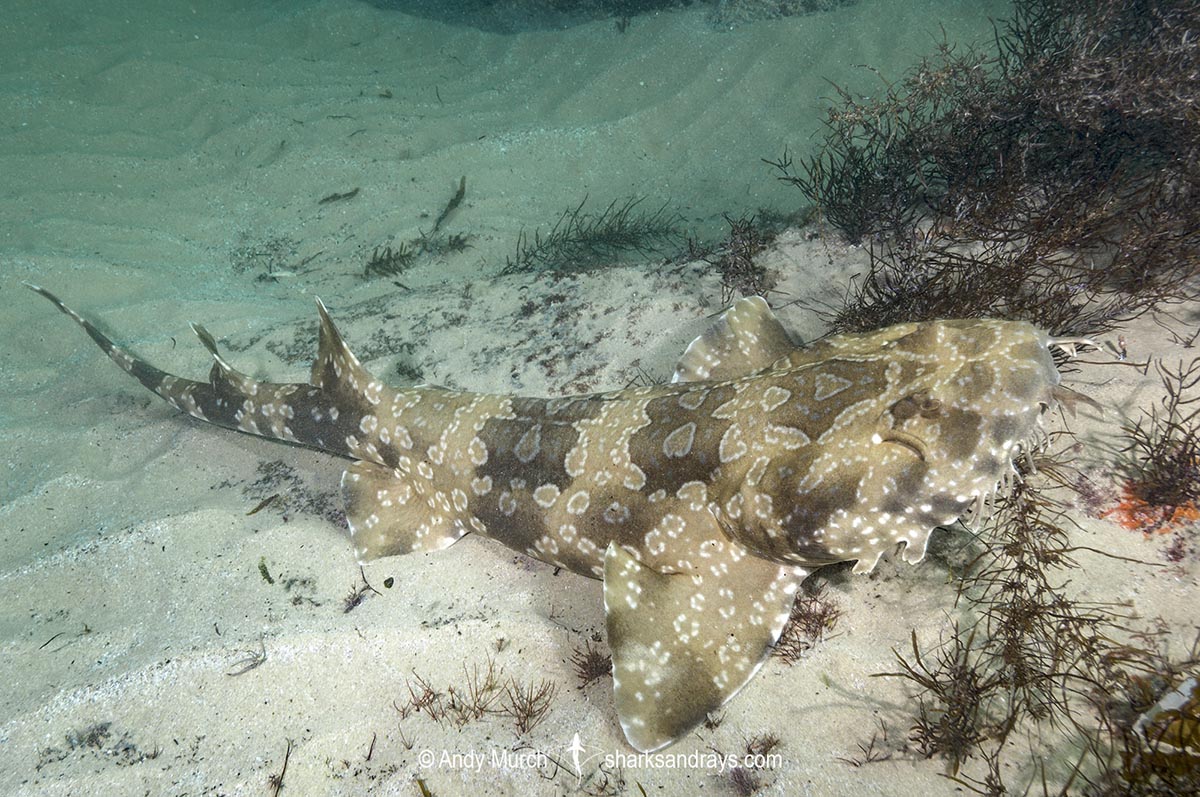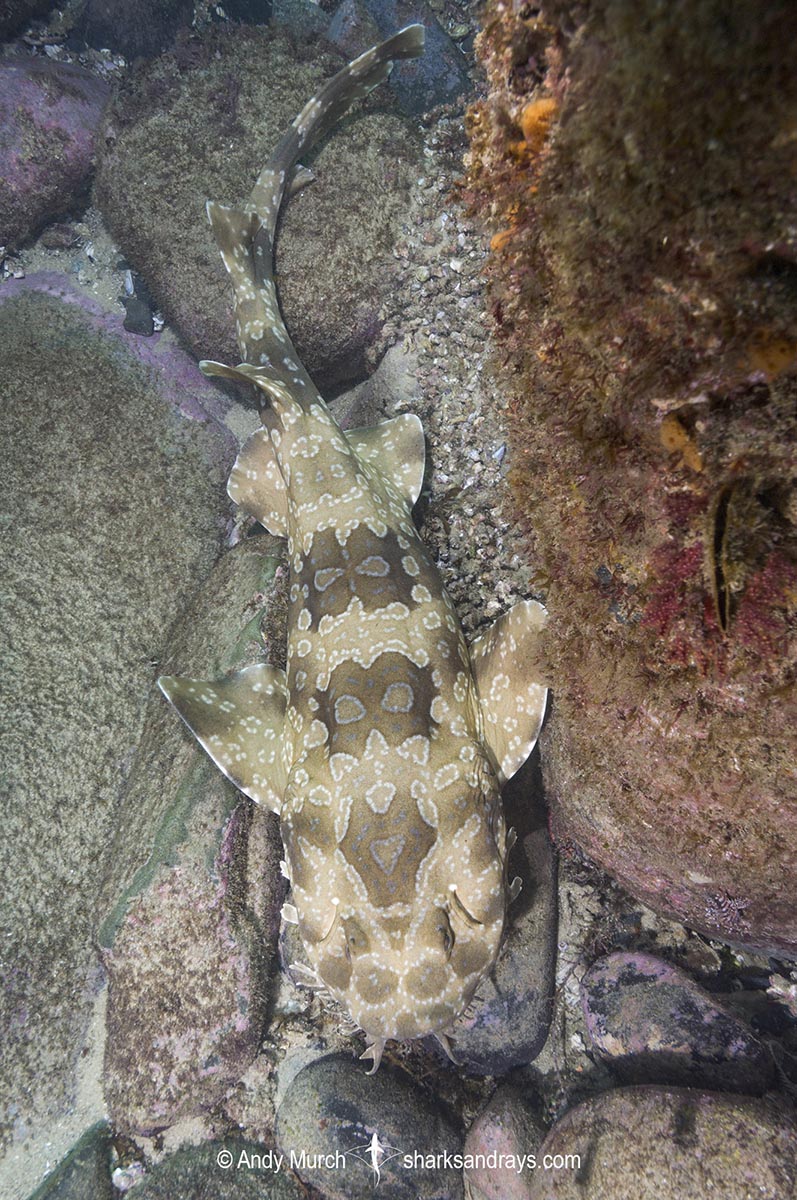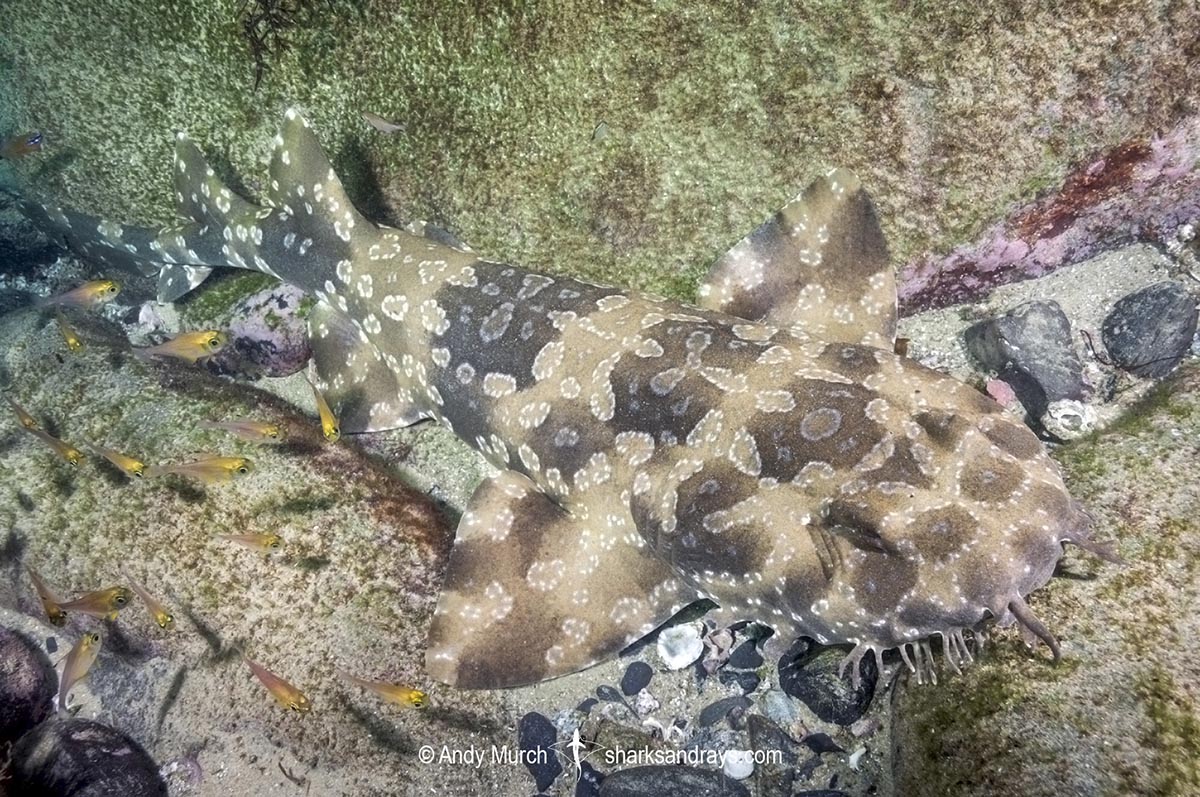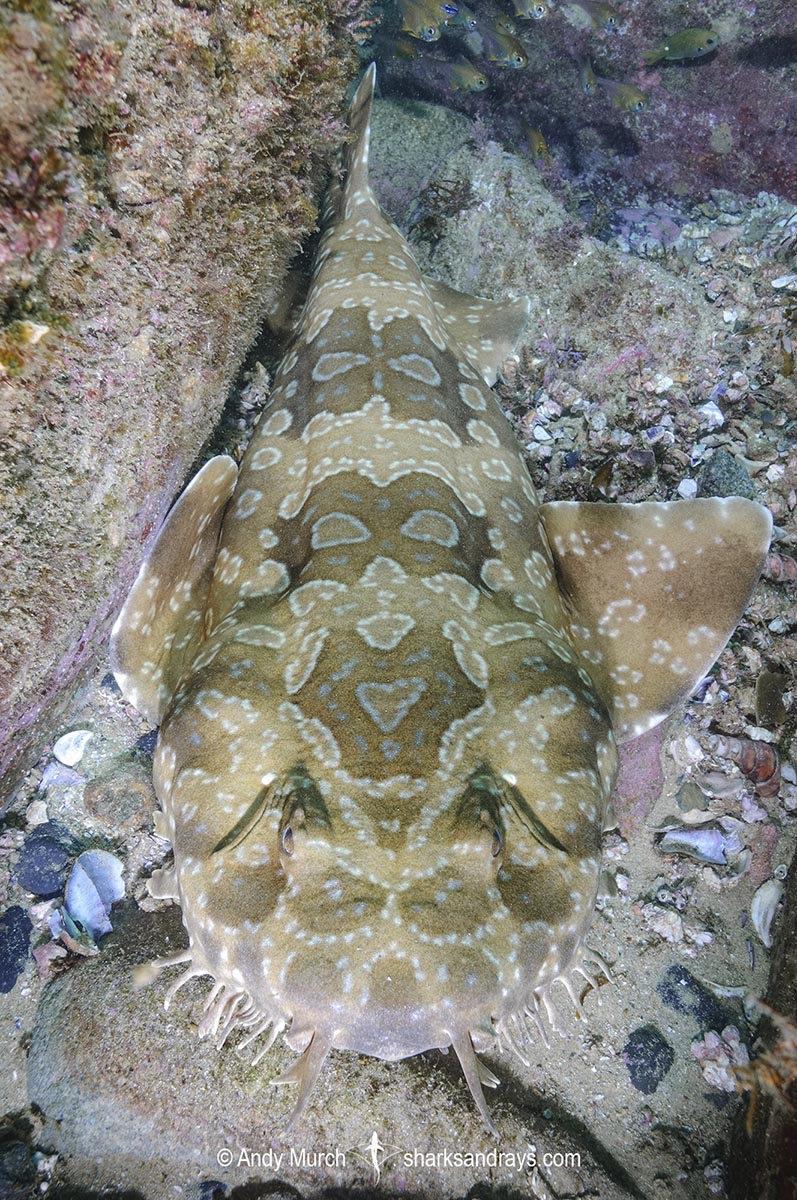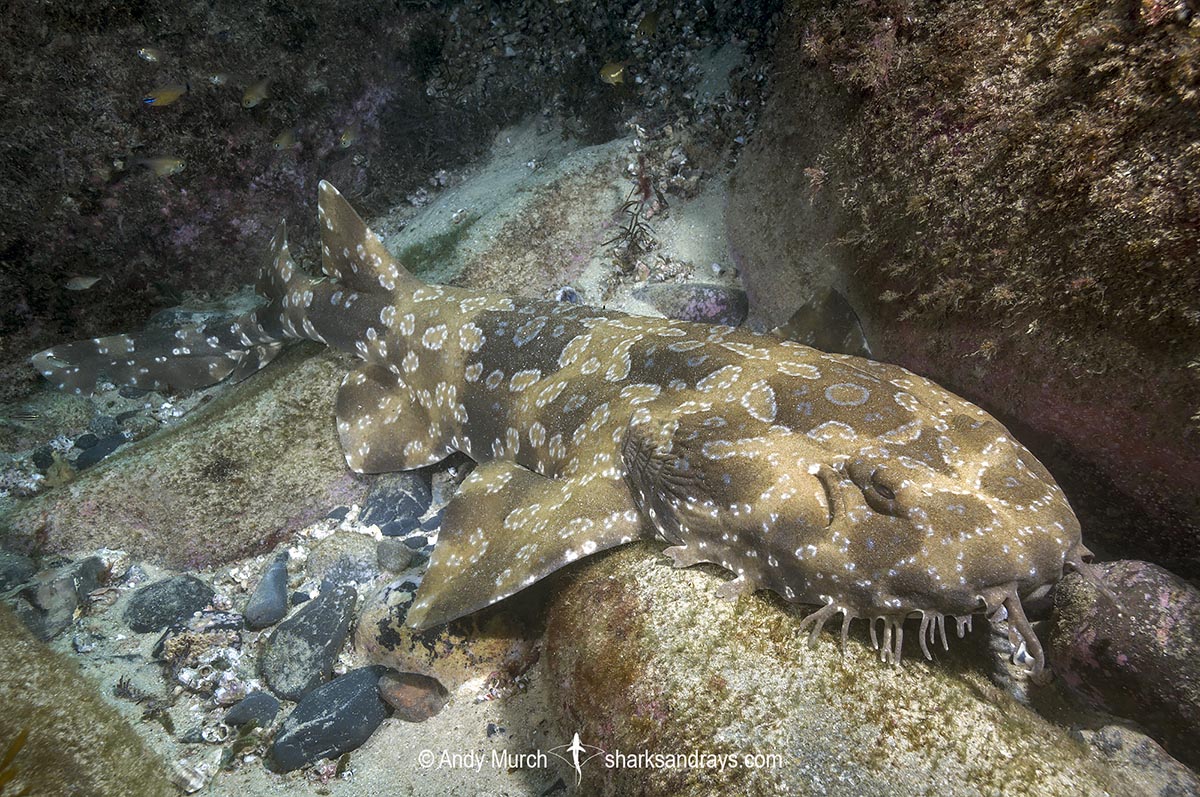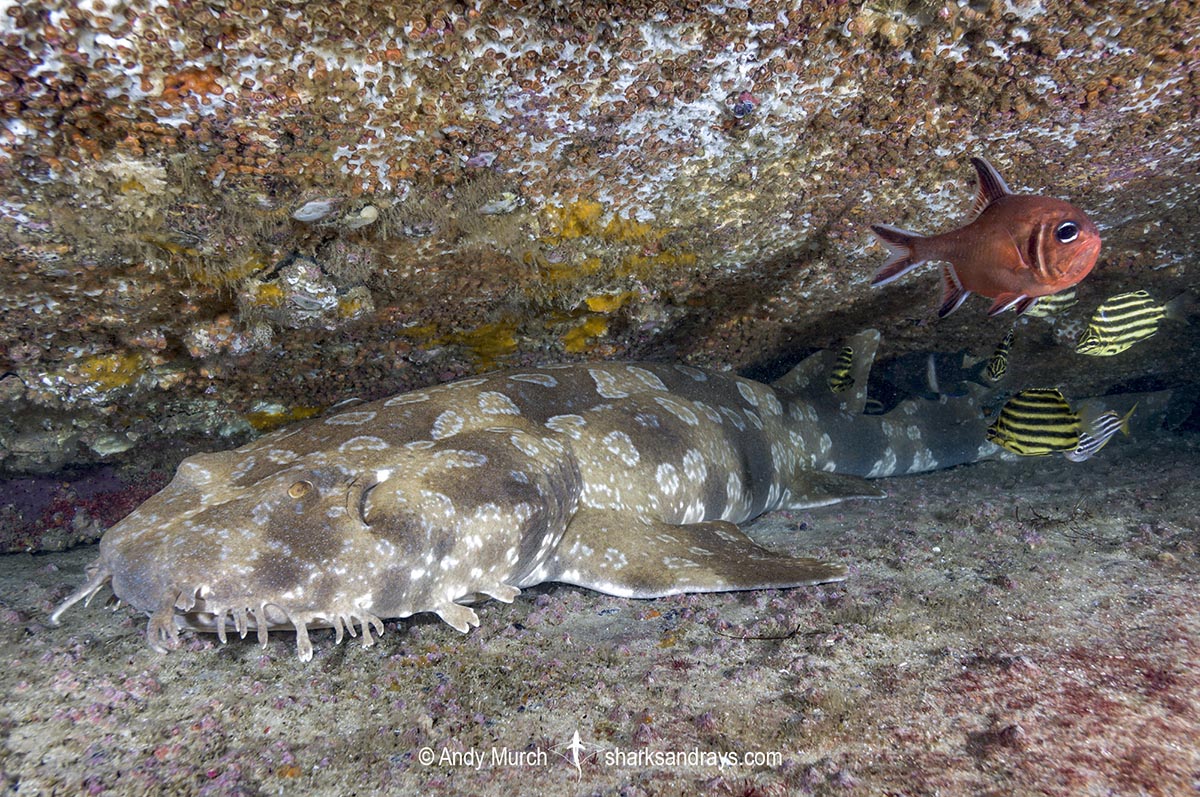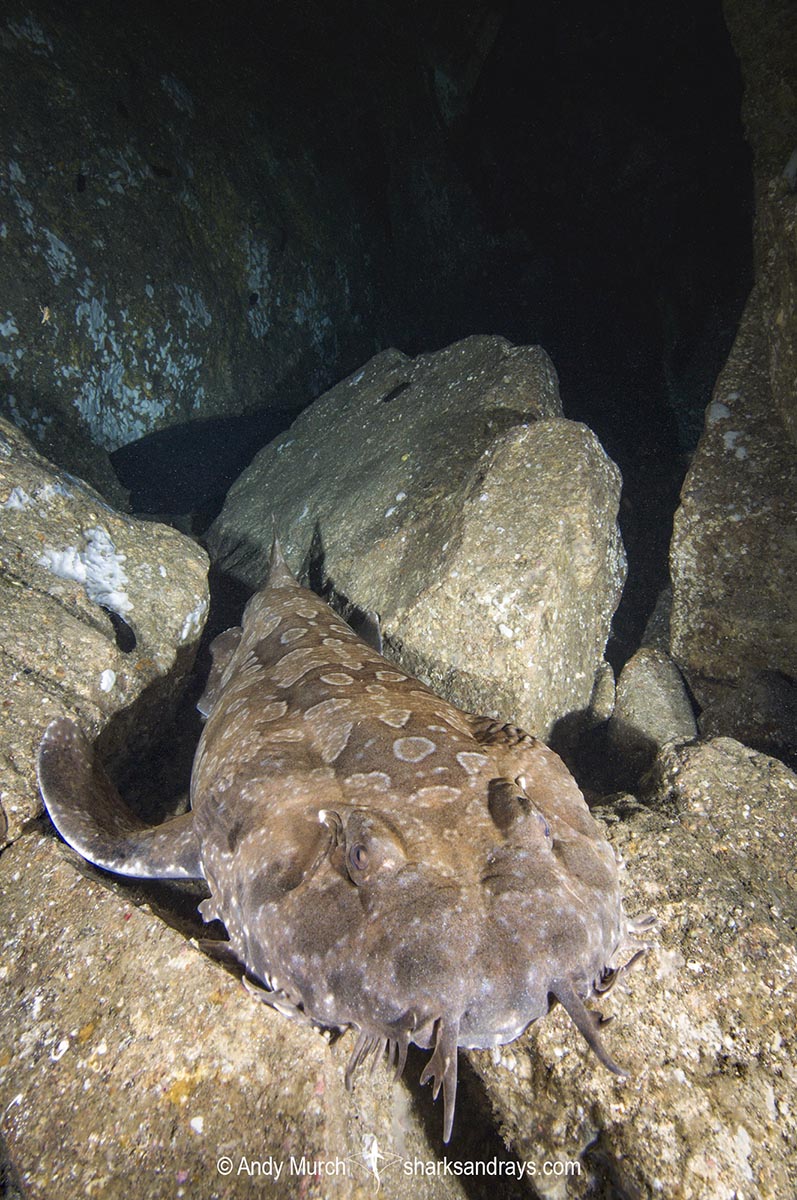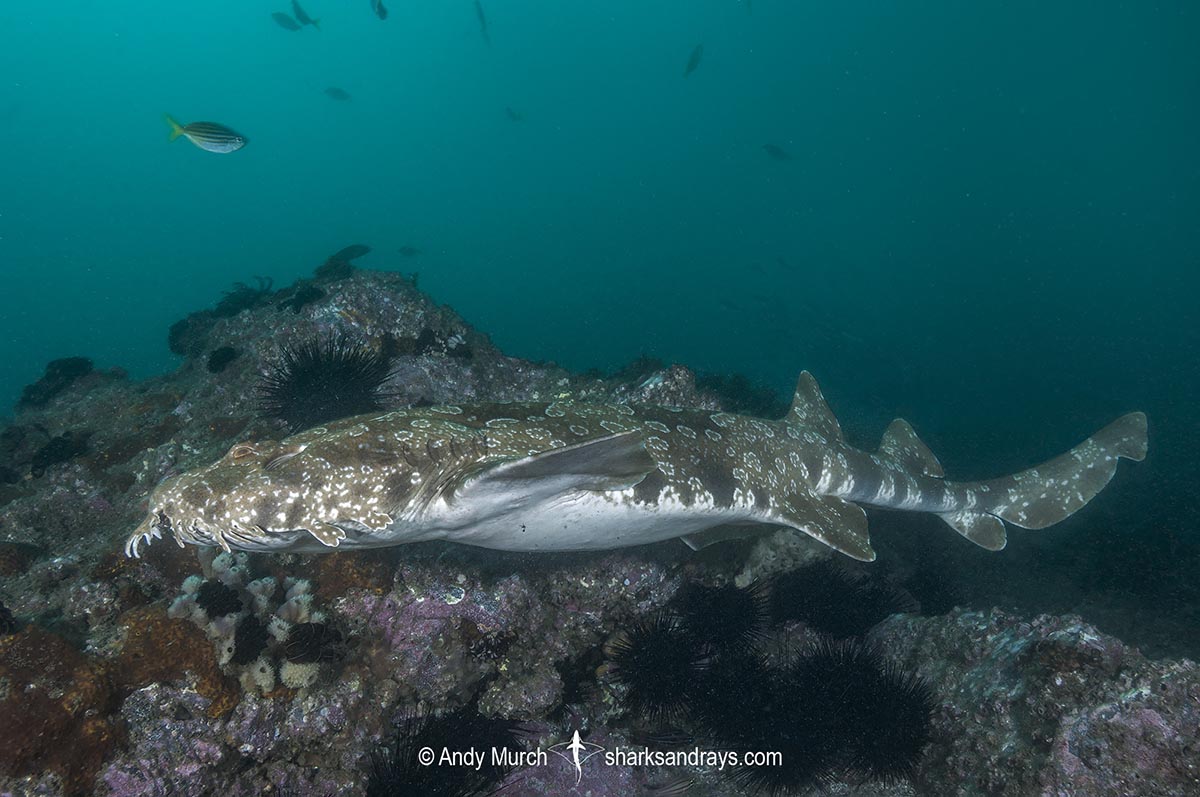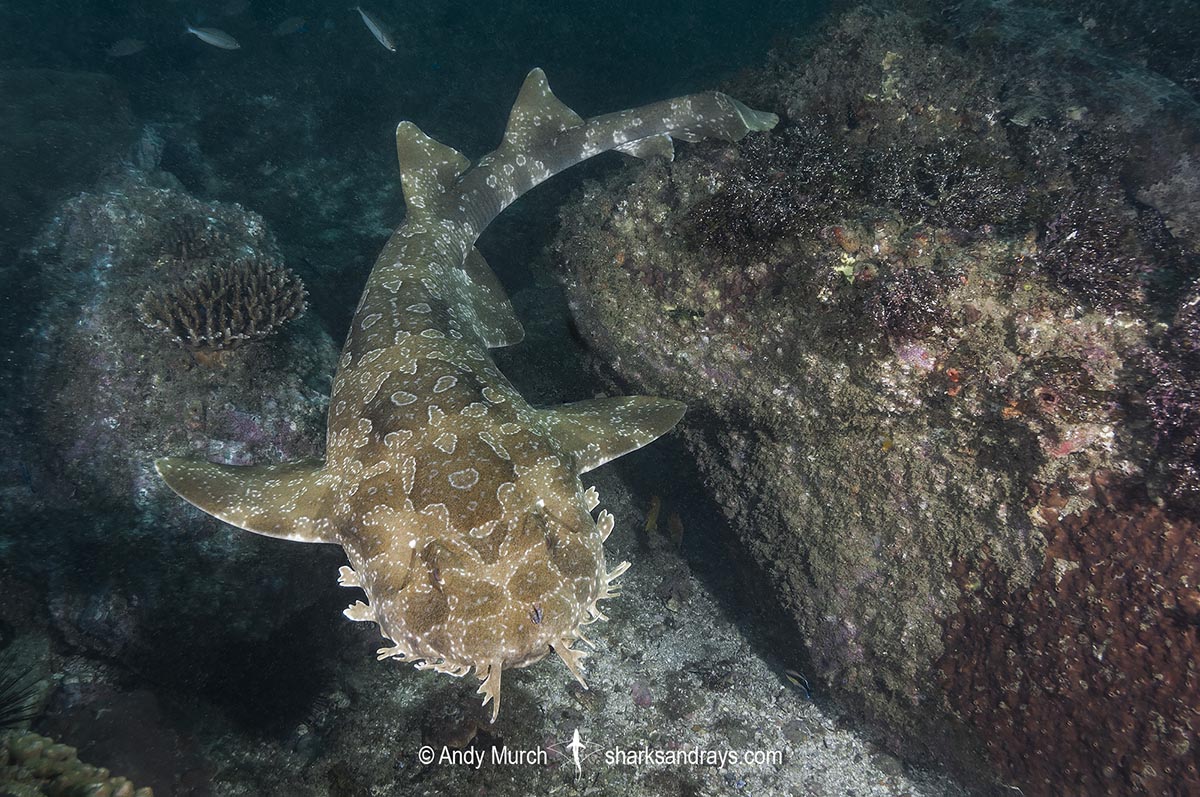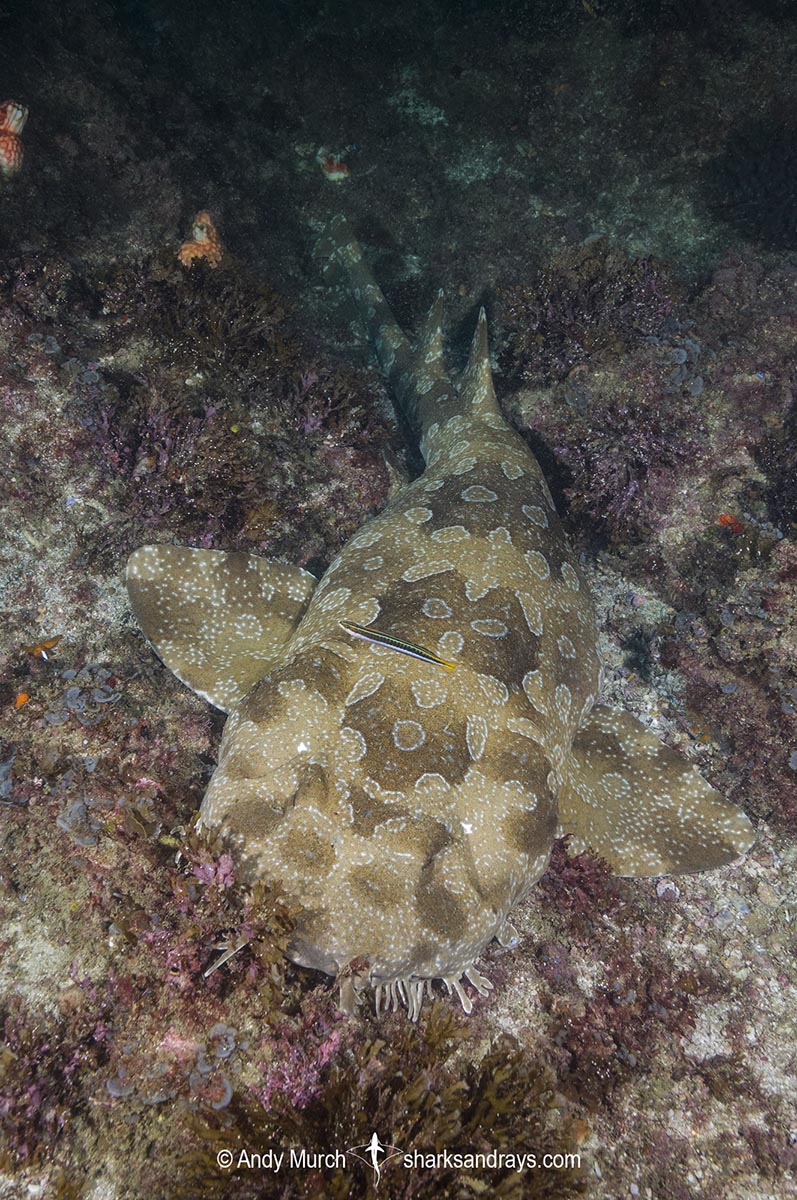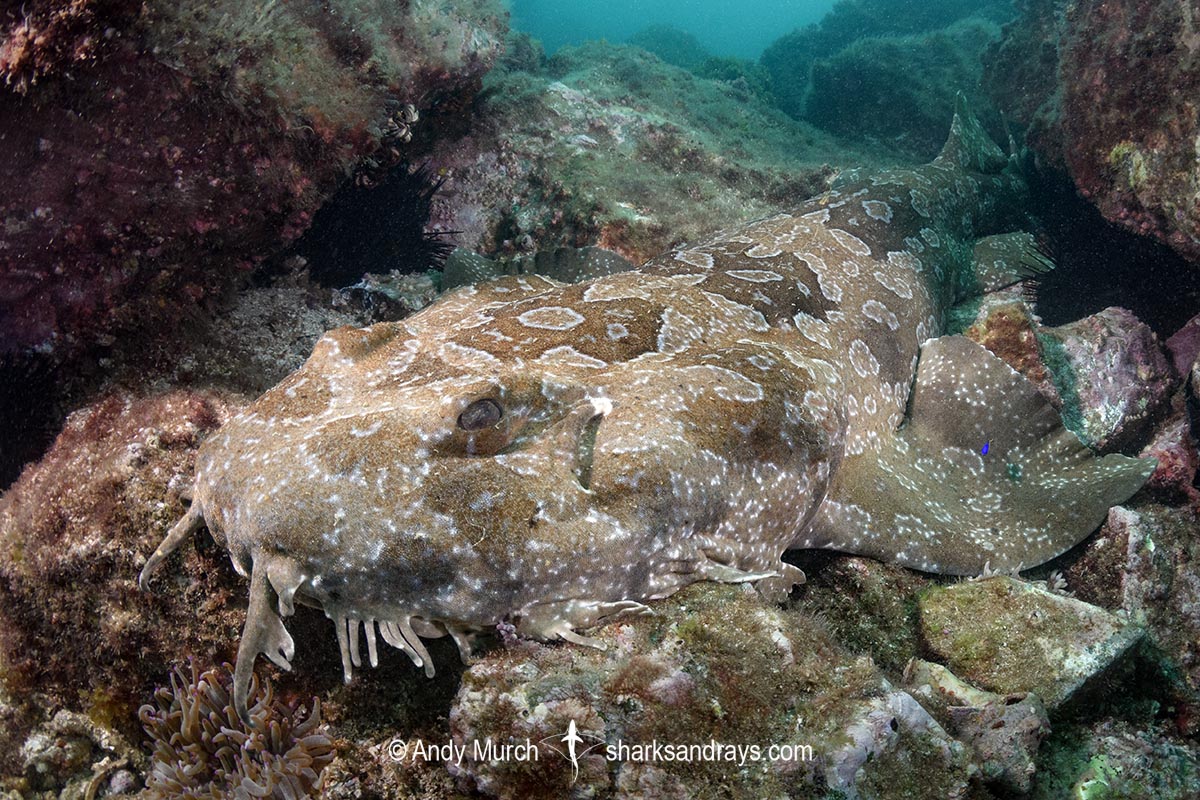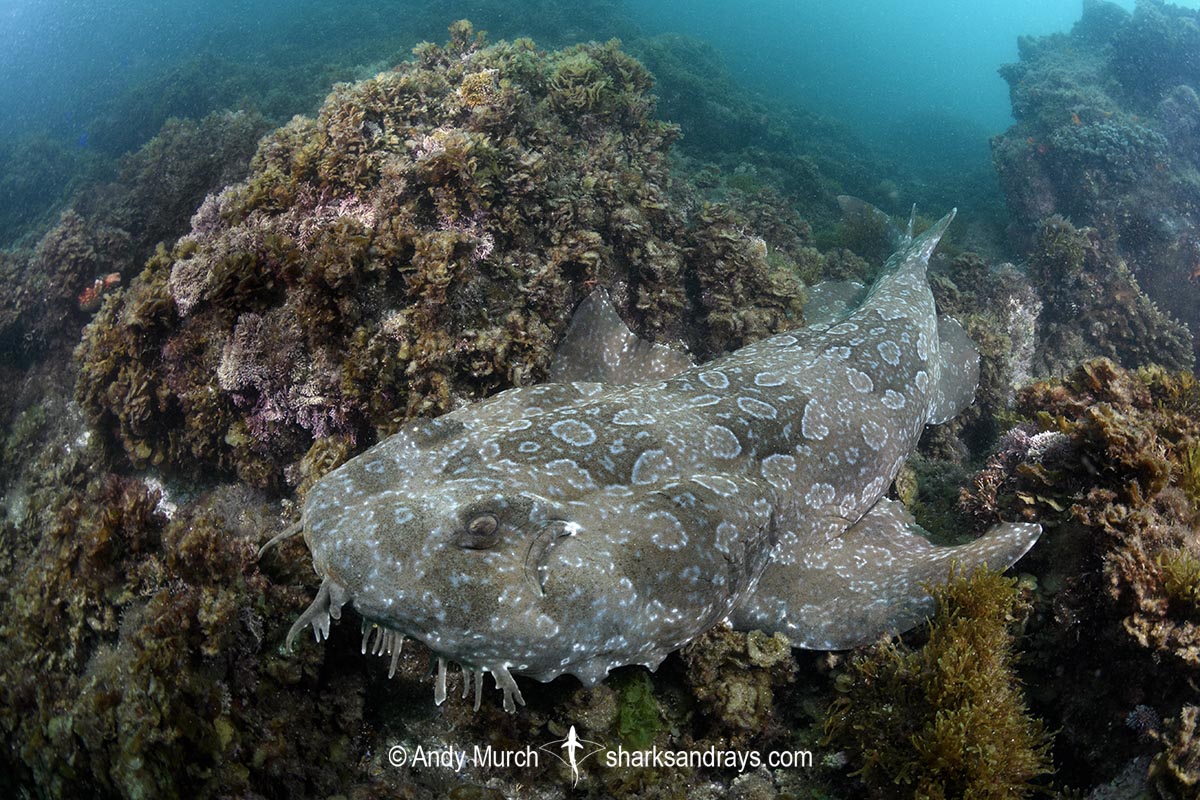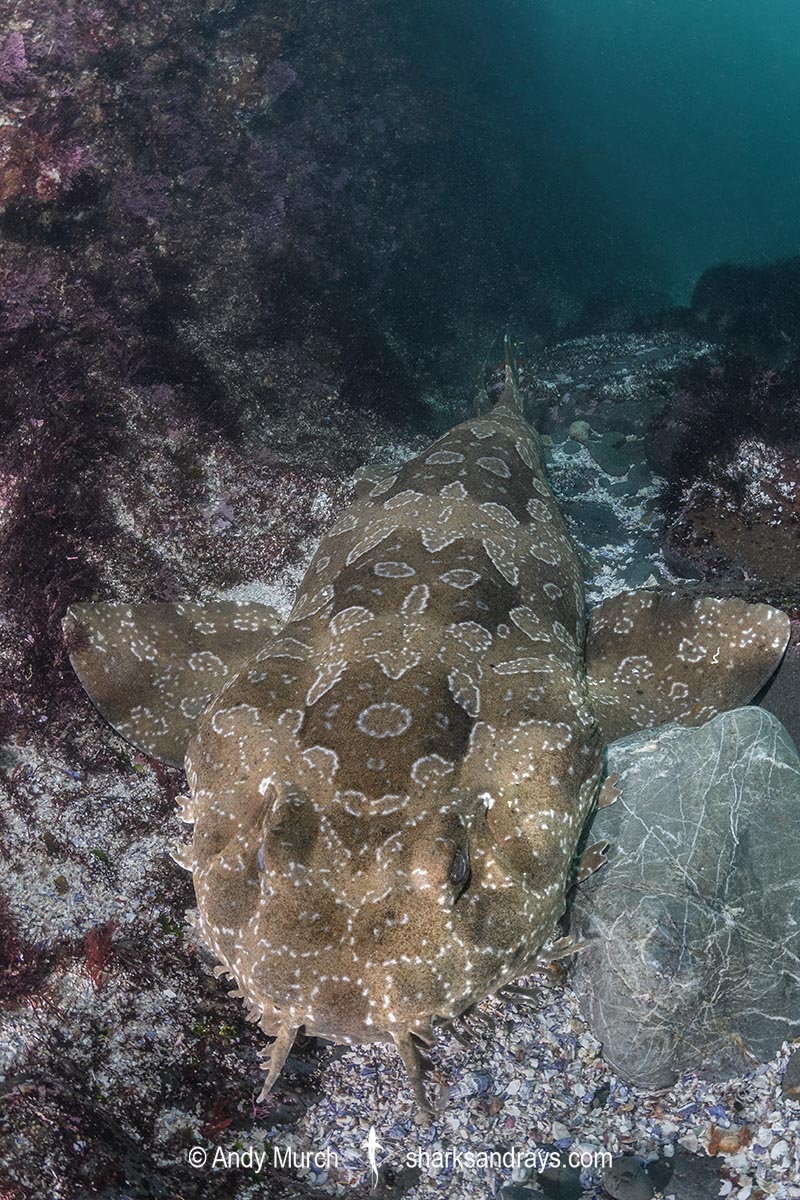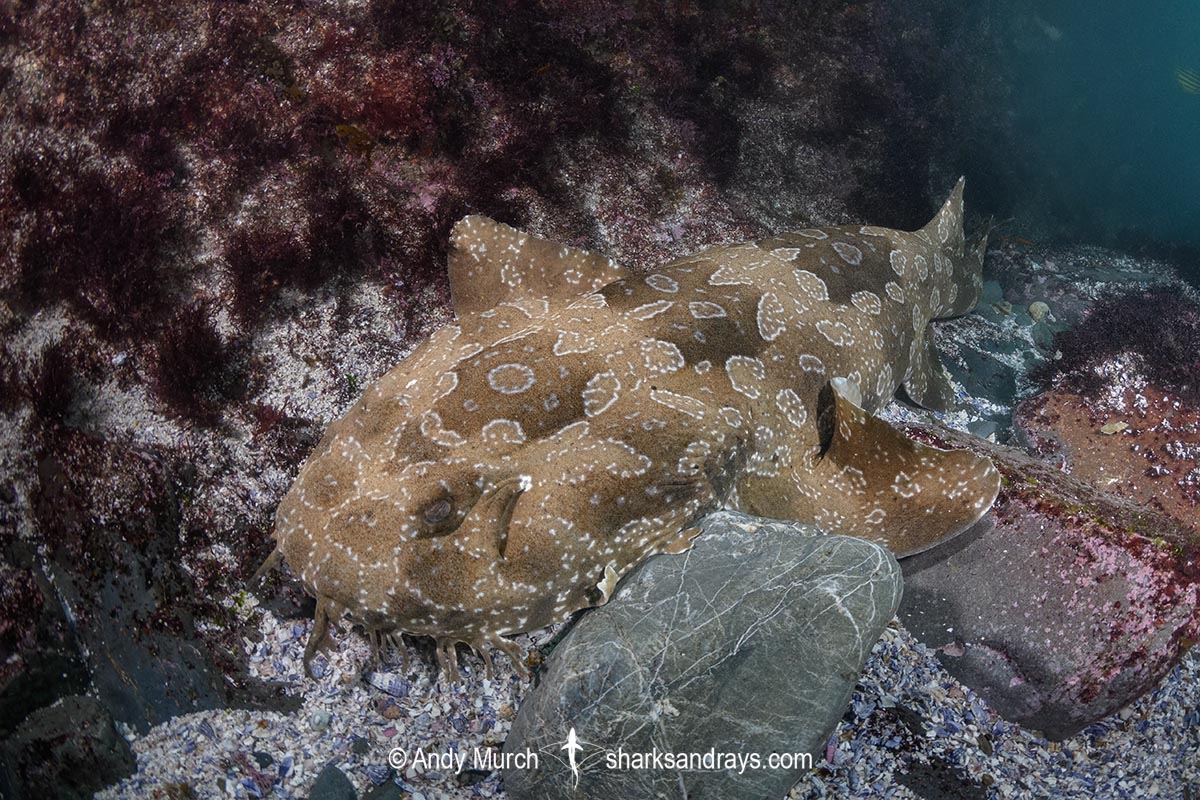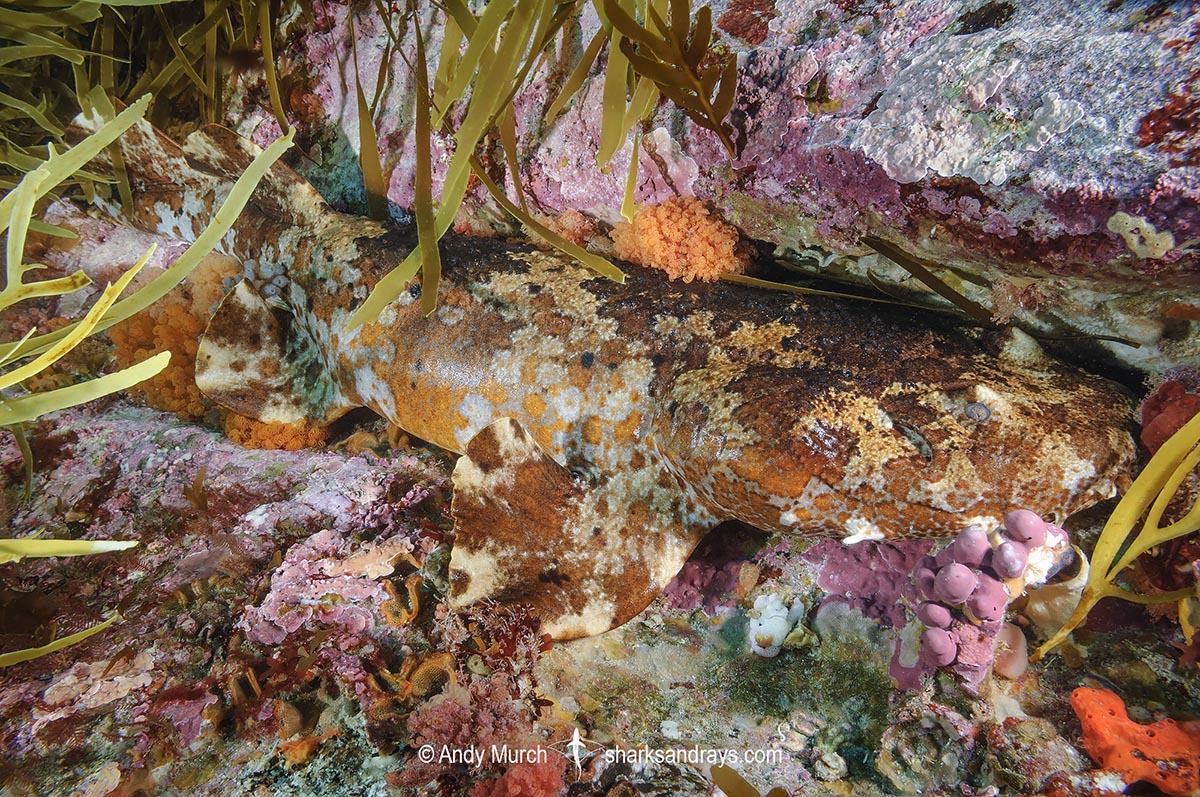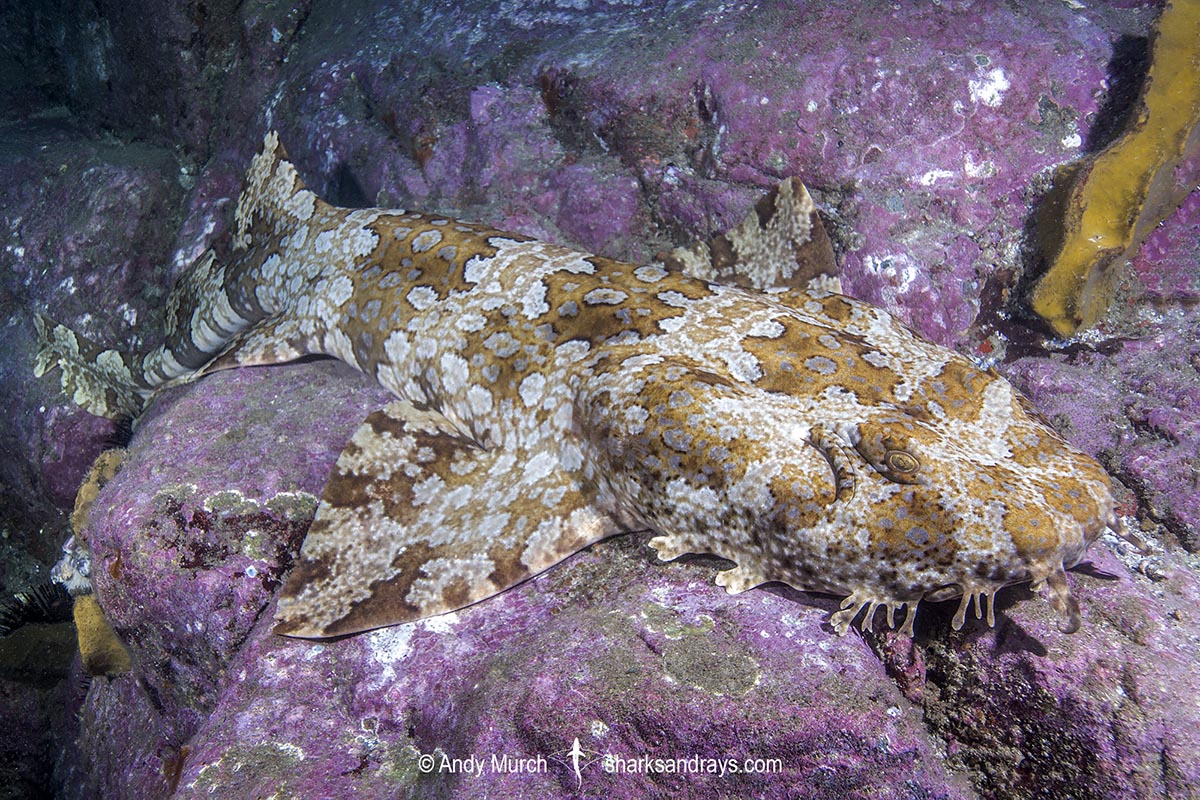Common names
Spotted Wobbegong.
Binomial
Orectolobus maculatus.
Synonyms
Squalus appendiculatus, Squalus barbatus, Squalus labiatus, Squalus lobatus, Squalus maculatus.
Identification
A large species of wobbegong. Long nasal barbells; branched with 2 shorter dermal lobes. 6-10 pre-orbital dermal lobes, split into three groups. Two post-spiracular lobes with broad bases and short branched tips.
Two equally sized dorsal fins. First dorsal origin over pelvic fin insertion.
No warty tubercles on head or body. Body light brown with dark brown saddles and light brown circles edged with small pale spots. Some individuals are much darker than others.
Size
Maximum verified length 170cm. Reports of 320cm individuals are probably exaggerations. Size at birth approximately 20-25cm.
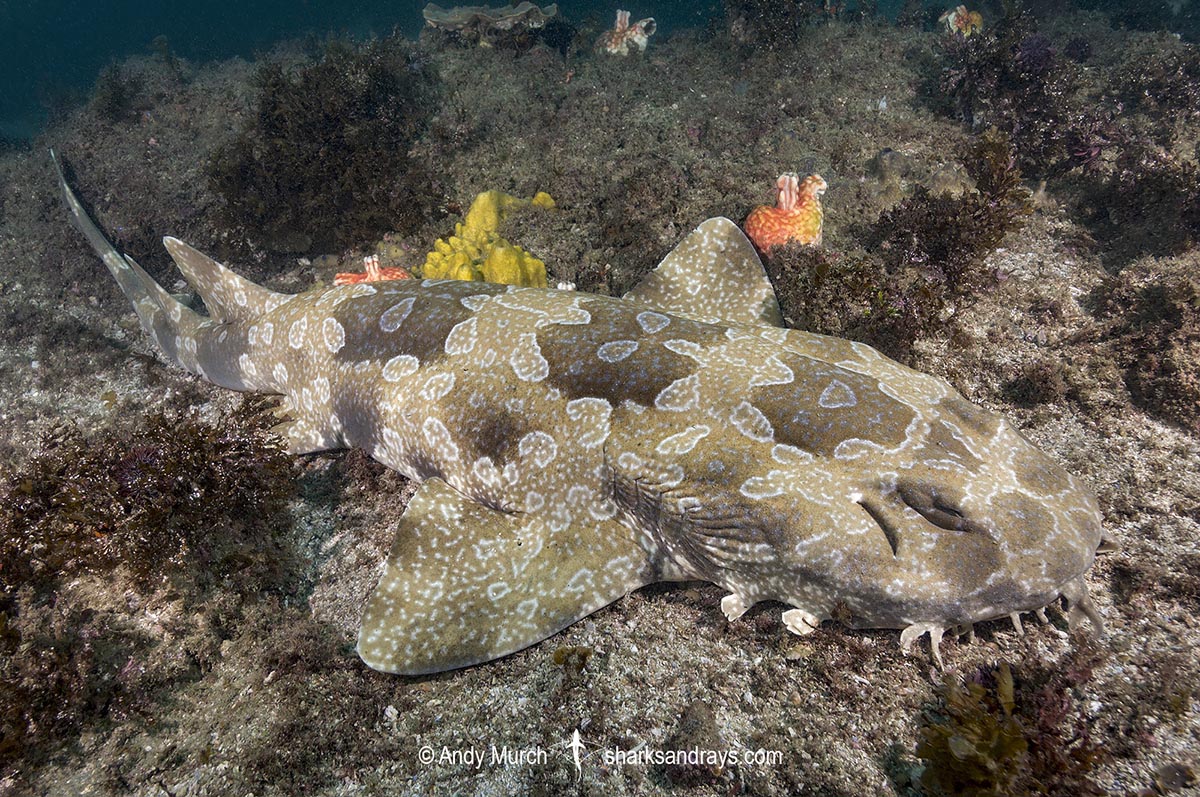
Conservation Status
LEAST CONCERN
Although previously listed as ‘vulnerable’ by the IUCN, catch limits introduced in 2008 (including a ban on retaining juveniles smaller than 130cm) and an overall downturn of fishing pressure, have led to stability in the Spotted Wobbegong (Orectolobus maculatus) and other species of wobbegongs around Australia.
It is worth noting that in Western Australia where recreational spear fishing is more intense, very few wobbegongs are seen on popular reefs. On the east coast where divers are more likely to dive with a camera, wobbegongs are extremely common.
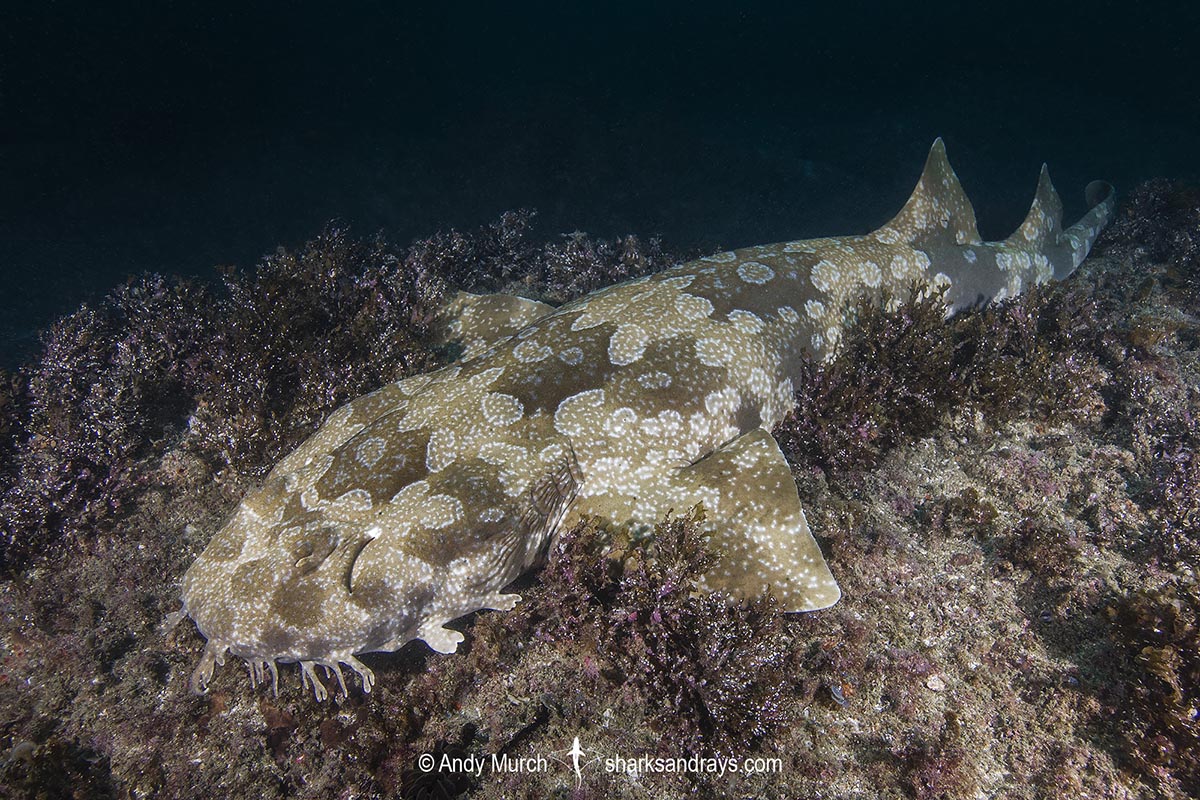
Habitat
Tropical and temperate seas. Found on rocky and coral reefs, seagrass beds, estuaries, tide pools, and on sand. Intertidal down to at least 218m.
Distribution
The spotted wobbegong is an Australian endemic. It is found on the east coast from Gladstone in Queensland, southwards, along most of the south coast, and on the west coast as far north as Bessieres Island off of Western Australia. It is absent from Tasmania and from the mainland opposite Tasmania.
Reproduction
Ovoviparous and lecithotrophic, i.e. the foetus is solely nourished by the yolk within the egg case. Up to 37 pups per litter. Gestation lasts approximately 10-11 months with parturition occurring during September-October (Huveneers et al. 2007).
Diet
The spotted wobbegong feeds on bony fishes, elasmobranchs, and benthic invertebrates.
Wobbegongs are ambush predators that remain motionless, camouflaged against the reef. When an appropriately sized fish swims in front of its disguised mouth, the wobbegong lunges forward simultaneously stretching its mouth open. The process sucks water and the fish into its mouth, which immediately snaps shut again, trapping its prey with needle-like teeth.
Behavior
Nocturnal. Sometimes rests/hunts in water barely deep enough to conceal it. The spotted wobbegong has been observed partially exiting the water, using its powerful pectoral fins to drag itself from one tide pool to another.
Reaction to divers
Easy to approach. Remains at rest, relying on camouflage unless closely harassed.
Diving logistics
The spotted wobbegong is a commonly encountered species, especially in New South Wales and southern Queensland. Two particularly good spots where this species is easy to find are Fish Rock near the town of Southwest Rocks, and Julian Rocks in Byron Bay.
What’s new
View our full list of updates
Similar species
Cobbler Wobbegong has large tubercles on both the head and body that are not present in any other members of the family Orectolobidae.
Banded Wobbegong Distinguished by more intricate markings including dark saddles that are edged with broken black lines.
Western Wobbegong Distinguished by slender unbranched post-spiracular dermal lobes, and a yellowish brown coloration with well-defined, darker brown saddles containing paler markings that lack whitish rings and blotches.
Floral Banded Wobbegong Distinguished by predominantly dark brown coloration with clusters of white spots that form flower-like patterns.

